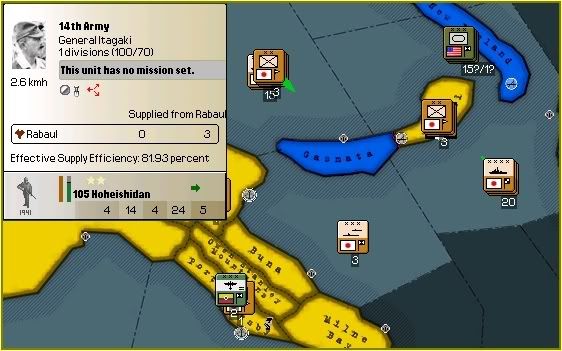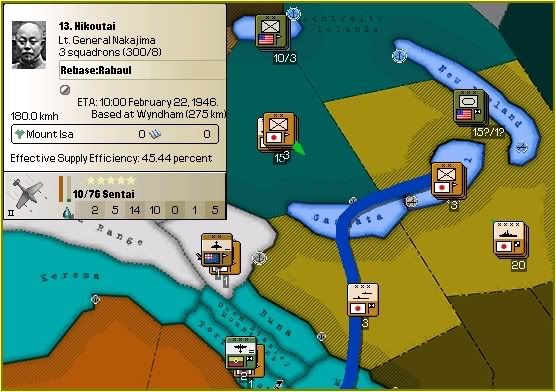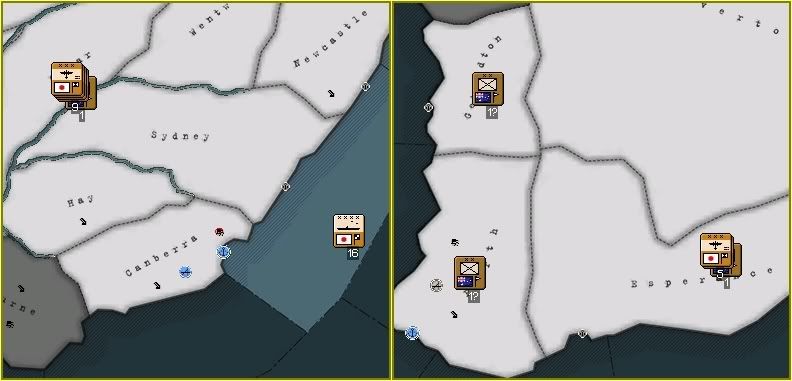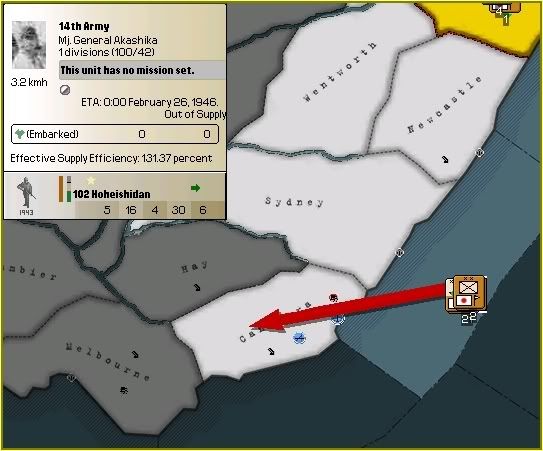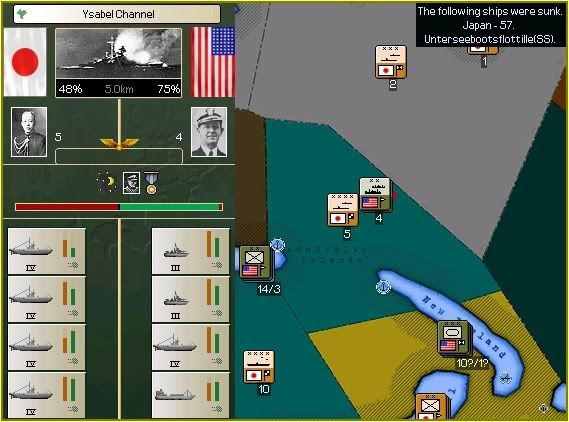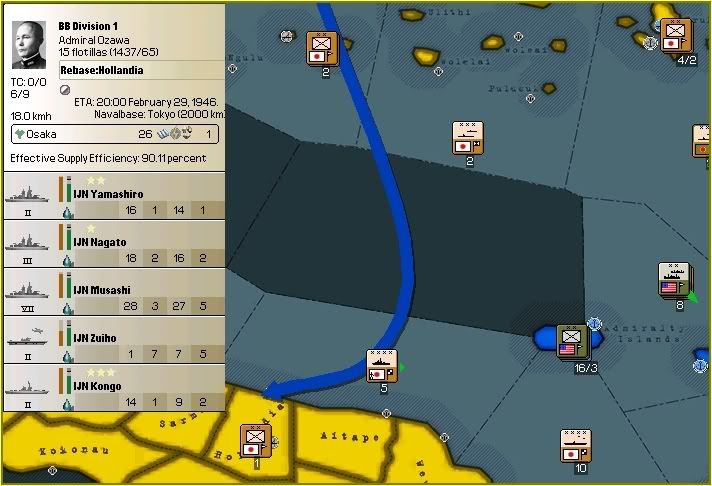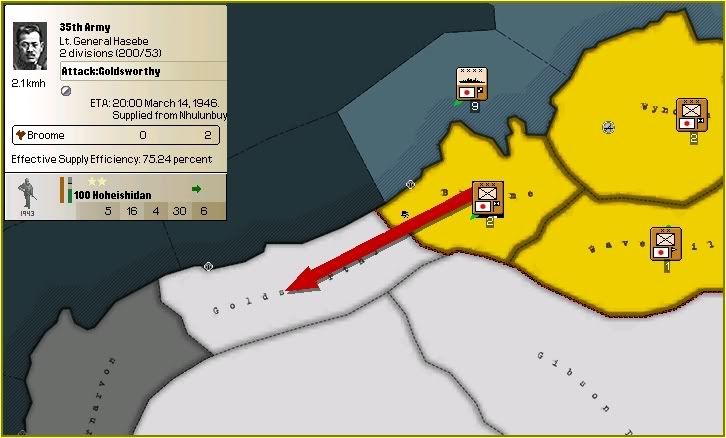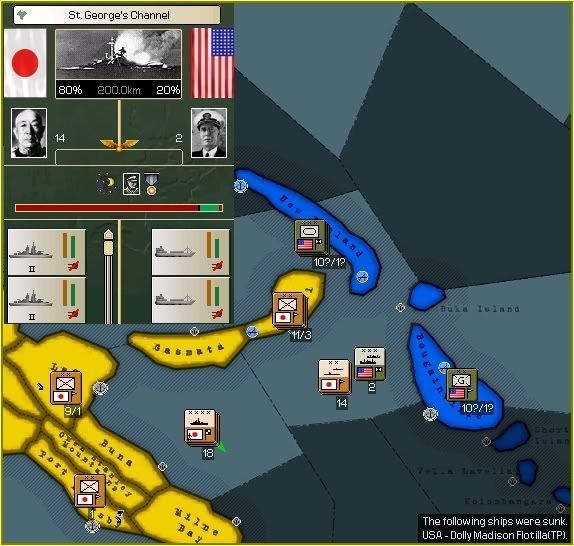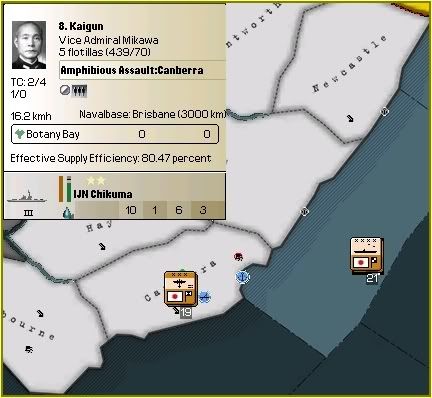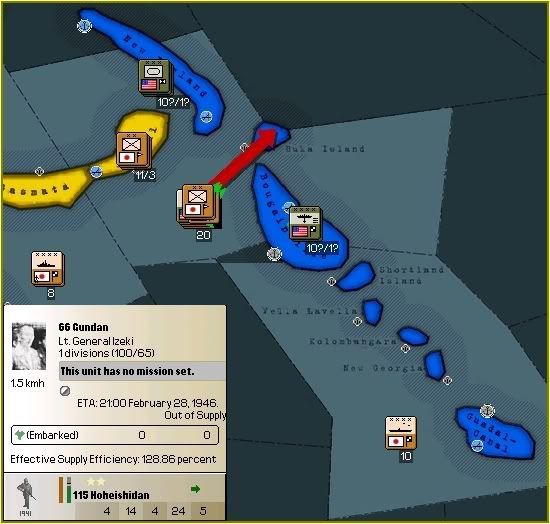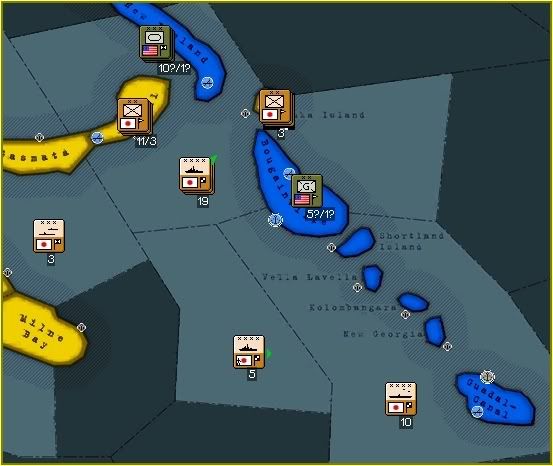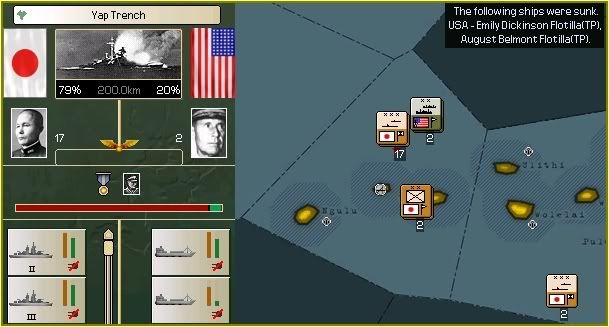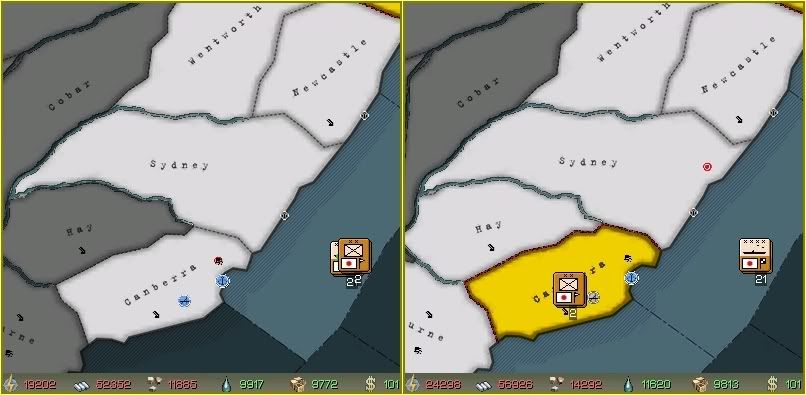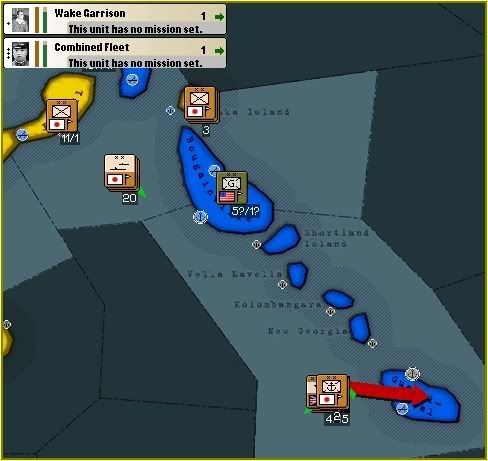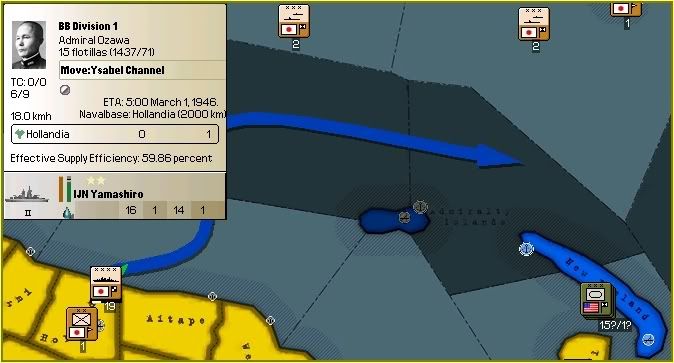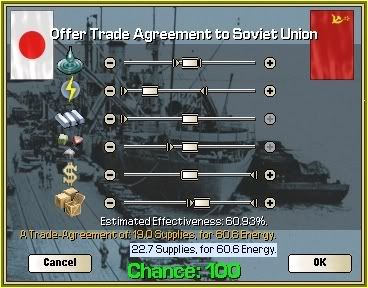Tactical bombers covering southern Australia had removed the defenders of Canberra at some cost to themselves from the heavy anti-aircraft fire in the area. Mikawa ordered the troops onboard his Transport fleet to attempt another landing.
Lt. General Izeki had not needed to travel far to begin another invasion. His target was the undefended Buka Island where his troops could support a landing against Bougainville once they had reorganised.
Carrier Group D had moved south to investigate the defences of Guadalcanal and much to Ozawa's surprise it was defenceless. Imamura and Banzai were still not totally rested but would move immediately to take advantage of this lapse in the enemy defences.
Admiral Spruance had run out of luck a long time ago and he would find himself on the receiving end of another encounter with the Imperial Japanese Navy. He was unlucky enough to meet the strongest Battlefleet at sea.
Ozawa and BB Division 1 more or less ran him over during their transit south towards Hollandia. Spruance could have been conducting an invasion towards Ngulu when he was unfortunate enough to be found. Whatever he was doing in the Yap Channel quickly ended when the Battlecruiser IJN Kongo and Battleship IJN Yamashiro sank the ships he had been commanding.
The capture of Canberra at 0500 hours on February 29th would see a modest increase to Japan's stockpiles as well as the capture of some more aircraft. Sydney was the new capital and was not far away. The troops in Canberra were too tired to advance for the time being but forces advancing from further north could be used to seize the area to the east.
Two of the three divisions in Rabaul were embarked at 1000 hours on the 29th and headed towards Bougainville, where support for their amphibious assault would be provided from the freshly captured Buka Island.
Six hours later Japanese marines began their own assault of Guadalcanal protected by Carrier Group C.
BB Division 1 arrived in Hollandia late on February 29th, and sailed immediately for the Ysabel Channel, where they would arrive early on March 1st.
0000 February 30th 1946.
Diplomatic Offices. Tokyo, Japan.
Mamuro had asked the Soviet Ambassador for another visit as there was still some milage to be gained from re-negotiating contracts currently in place.
More supplies would be saved due to the latest change in terms between the two Countries. The Soviet Ambassador declined to stay for Tea which was not what Mamoru had expected. He was beginning to become a little suspicious.
0000 February 30th 1946.
Intelligence Headquarters. Tokyo, Japan.
Kuniaki was already gathering his intelligence reports for the meeting the next day when Nakajima informed him that they had completed research into a usable Turbojet Engine.
They were tasked with working out how to fit it to Japanese Interceptors as Kuniaki asked for several reports to be verified and re-sent before the meeting the following day. Something was very wrong with the numbers he had been provided by some of his agents.


